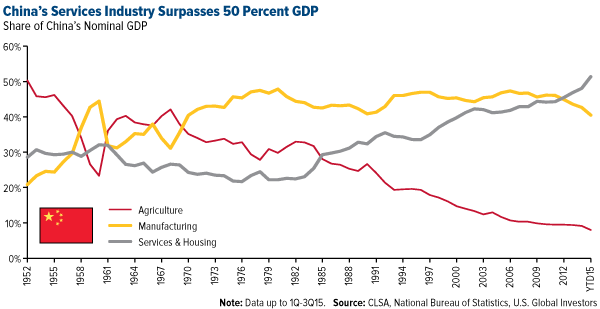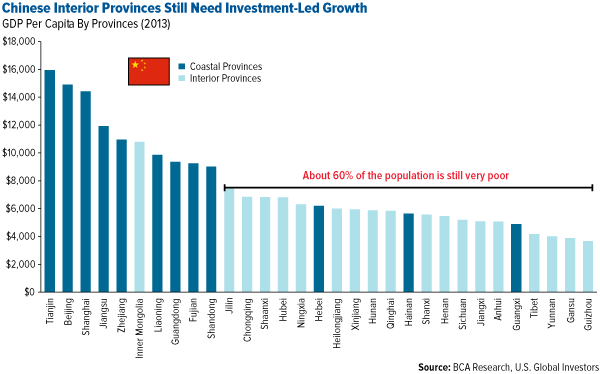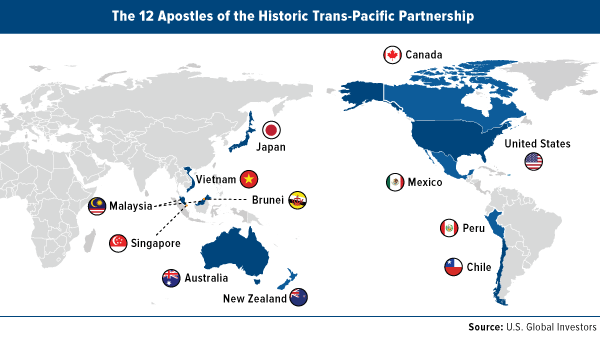Last Thursday I had the pleasure of attending an intensive daylong ETF conference in Austin, just up the road from our office in San Antonio. Hosted by Cantor Fitzgerald, the conference was designed for institutional investors.
Welcoming the group was Reginald “Reggie” Browne, the “Godfather of ETFs,” who now serves as the senior managing director at Cantor Fitzgerald. His celebrity and prominence are nearly as big as his six-foot-five frame—and with good reason. Reggie has been instrumental in building the ETF landscape over the last decade and convincing investors of the power of the exchange-traded fund.
One of the panels featured chief investment officers from the Texas Teacher Retirement System (TRS). Jase Auby, Lee Partridge and Tom Tull discussed potential shifts in asset allocation under a rising interest rate environment, among other topics.
The TRS, one of the largest pension funds in the U.S., makes significant use of gold in its investment strategy, holding the yellow metal in many forms over the years. The same is true for the $20 billion University of Texas endowment fund.
Bruce Zimmerman, chief investment officer for UTIMCO, told CNBC in 2011 that the $20 billion endowment holds gold as a diversifier and hedge against currencies. This is precisely what we tell investors, and it’s validating to see such huge funds put it in practice.
During the ETF panel, I asked Jase, Lee, Tom and moderator Ronnie Jung about their thoughts on real interest rates and their relationship with gold. Everyone’s speculating on when the Federal Reserve will hike interest rates, but real interest rates, as I shared with you this week , appear to have already risen. (As a reminder, real interest rates are what you get when you deduct the monthly rate of inflation from the 10-year Treasury yield.) A 10 percent upswing in the U.S. dollar is equivalent to the federal funds rate being hiked 100 basis points.
This has had a huge effect on the yellow metal. When real rates are negative, gold has tended to do well. Conversely, when they’re positive—and rising, as they are now—it’s been a headwind for gold. This relationship was confirmed by the research of Barry Bannister, chief equity strategist for Stifel, who visited our office last week.
I also appreciated the TRS group’s bullishness on China. Their position is that, because everyone is negative on China right now, all sorts of investment opportunities open up from a contrarian point of view.
The World’s Second-Largest Economy in Flux
I’ve commented before that China has been moving away from a manufacturing-based economy and instead focusing more on services—financials, real estate, insurance, ecommerce and the like.

While the country’s purchasing managers’ index (PMI) reading has been in contraction mode since March of this year, these service industries are ever-expanding. The problem is that the transformation has not been fast enough to offset the massive size of the manufacturing sector.
But investment opportunities in this sector still exist. Anyone who’s traveled more than 100 miles inland knows that China is under-urbanized. Ever since Deng Xiaoping created special tax-free zones along the eastern Chinese coastline in 1978, most of the country’s growth has been concentrated in these few regions and municipalities. The interior provinces, on the other hand, have remained largely rural.
You can see this for yourself in the chart below, provided by Marko Papic, chief geopolitical strategist for BCA Research, who briefed our investments team this week. BCA is an influential, independent investment strategy firm with more than 65 years of experience conducting excellent macroeconomic research.

We just learned that the People’s Bank of China cut both lending and saving rates 0.25 percent, to 4.35 percent and 1.50 percent respectively. This will cause negative real rates in China to fall even lower, which is good for gold demand.
It will also likely add to the Fed’s list of doubts about raising its own rates. In a world where every other major country is stimulating its economy by cutting rates and devaluing its currency, it makes less and less sense for the U.S. to hike rates.
BCA’s Marko Papic stressed the need to see further stimulus in China. Without it, commodities and global growth in general are at risk. Some economists believe we might be headed for a global recession.
Difference of Opinion When It Comes to Defining Global Recession
Depending on who you ask, there are different ideas of what global recession looks like. The generally accepted one in the U.S. is two consecutive quarterly declines in real GDP. The International Monetary Fund (IMF), however, uses a different measure. Among other economic conditions, annual GDP must fall below 3 percent, a high benchmark and one that requires much stimulus.
Global growth for 2015 is at 3.3 percent, the IMF calculates, precariously close to the 3 percent threshold.
BCA Research: The Trans-Pacific Partnership Is Needed to Fast-Track Global Growth
This is where the Trans-Pacific Partnership (TPP) comes into play, which is the stance BCA also takes. The landmark trade agreement, involving 12 nations, was signed earlier this month. Although it still requires ratification, the TPP could boost the world economy by an incredible $223 billion by 2025, according to the Peterson Institute for International Economics.

Like Father, Like Son: Canada Elects a New Leader
One of the TPP’s biggest supporters was outgoing Canadian Prime Minister Stephen Harper. But the newly elected Justin Trudeau, member of the Liberal party, has also come out in support of free trade agreements. The hope is that he will continue to take this position where the TPP is concerned.
Although Trudeau earned his degree in education from the University of British Columbia and taught as a school teacher for many years, he is by no means a stranger to politics. He’s served as a Member of Parliament since 2008, and his father, Pierre Trudeau, served as Canada’s prime minister for 15 years.
Back in the 1970s, in fact, I campaigned for Pierre Trudeau alongside Dr. John Evans, a Rhodes Scholar. This was during Trudeau’s first stint in office, before being voted out in 1979 and then returning to serve again in 1984.
His son, only 43, ran on a campaign of hope and change—sound familiar?—and promised that, if elected, he would help the economy by increasing infrastructure spending. Unlike some other world leaders, he wants to put people to work instead of establishing a welfare state. Trudeau plans to raise revenue by taxing recreational marijuana—if he succeeds at legalizing it, that is.
One of the main criticisms of Trudeau the Younger is that he’s inexperienced politically. But here in the U.S., take a look at who’s currently topping the polls in the Republican field: business magnate Donald Trump, neurosurgeon Dr. Ben Carson and former Hewlett-Packard CEO Carly Fiorina. Accomplished though they are, none of them has been elected to office. This goes to show that voters have grown fed up with career politicians who lack accountability.

